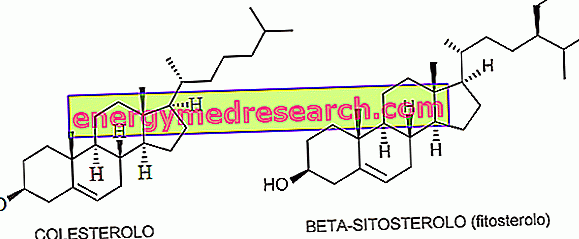What is Seborrhea?
The term seborrhea refers to an exalted, or at least increased activity of the sebaceous glands; this hyperfunction is embodied in the excessive production of their secretion, called sebum.

When it appears during puberty, seborrhea is in many cases the antechamber of acne.
To learn more, see the dedicated article: acne and seborrhea.
Symptoms
To learn more, read: Seborrhea - Causes and Symptoms »
The seborrhea begins macroscopically giving the skin of the face a shiny and oily look, sometimes also affecting the scalp and the upper part of the back.
Excessive sebum secretion can also give the skin a dry and rough appearance to the touch. In this case, we speak of asphyxiated skin, a problem that arises when the excess of sebum does not find an outlet outside the follicles and, stagnating inside them, leads to the formation of comedones.
In fact, as anticipated, seborrhea often precedes and accompanies acneic lesions, in order: closed comedones (white spots), open comedones (black spots), papules, pustules, nodules and cysts. However, not necessarily acne is the direct consequence of seborrhea.
On the scalp, however, seborrhea can be accompanied by dandruff, alopecia and oily hair.
Usually, excessive sebum production gives the hair a greasy appearance and, when it is particularly evident, a typical rancid smell. In addition to the aesthetic and hygienic problem, the alteration of the quantity and quality of the sebum produced tends to subtract vitality from the hair, even if it is not however able to directly atrophy the follicles. For this reason, the term seborrheic alopecia has now fallen into disuse.
It must be said, on the other hand, that the same hormone involved in the onset of seborrhea (dihydrotestosterone) is responsible, if present in excess, for the gradual involution of hair follicles, commonly called hair loss (in these particular cases, we speak of " androgenetic alopecia ").
Consequences
In infants seborrhea is implicated in the formation of the so-called "milky crest", which regresses spontaneously.
In the adult, however, seborrhea is often associated with oily dandruff, characterized by thick, yellowish and oily scales, which fall from an equally oily scalp. The excess of sebum has also been called into question in the appearance of dry dandruff.
Sometimes seborrhea is accompanied by a form of eczema, a condition known as seborrheic dermatitis. This condition, of inflammatory origin, leads to the loss of greasy scales not only from the scalp (dandruff), but also from other areas rich in sebaceous glands, such as the eyebrows, the skin areas on the sides of the nose and behind the ears, the area inguinal and sometimes axillary. Very often it is associated with itching, sometimes intense.
Causes
As stated so far, seborrhea is implicated in the genesis of numerous conditions and inflammatory multifactorial diseases. Consequently, excess sebum is not necessarily responsible for their development and maintenance, on which various factors can intervene, such as:
- Endocrine elements (excessive androgen synthesis);
- Hygienic factors (excessive or insufficient personal hygiene);
- Cosmetics (use of aggressive or too fat cosmetics);
- Environmental factors (contact of the scalp with irritating substances);
- Dietary factors (excessive alcohol consumption, malnutrition);
- Psychological factors (stress);
- Sex factors (the male sex is the most exposed);
- Factors of infectious origin (alteration of the skin flora, with excessive growth of certain microorganisms, some diseases, disorders of the immune system).
Finally, it should be remembered that, in addition to excess, the change in sebum composition can also predispose to the typical manifestations of seborrhea. These changes can be physiological or, more frequently, induced by particular microorganisms, such as Malassezia furfur or Pityrosporum, considered to be the primary cause of dandruff and seborrheic dermatitis.
Care and Treatment
The treatment and treatment of seborrhea differ according to the conditions that accompany it.
The following table shows the main disorders that can occur in association with seborrhea and the consequent therapeutic approaches that can be used to treat them.
| PROBLEM | SOLUTION |
Seborrhea, acne and hair loss (androgenetic alopecia) | Endocrinologist visit, use of drugs inhibiting the enzyme 5-alpha reductase, such as finasteride or dutasteride, or similar phytotherapics, such as serenoa repens, pumpkin seeds, nettle root, epilobio, African pigeo. |
Seborrhea and oily hair | Trichological examination, frequent use of non-aggressive dermopurifying shampoos. |
Seborrhea and dandruff | Trichological examination, use of anti-dandruff shampoos, non-aggressive and with antibacterial action |
Seborrhea and asphyxiated skin | Dermatological examination, use of products based on retinoic acid under medical supervision, surgical enucleation, peeling. |
Seborrhea e seborrheic dermatitis | Dermatological examination, use of creams or shampoos with bactericidal action, such as those based on ketoconazole. |



